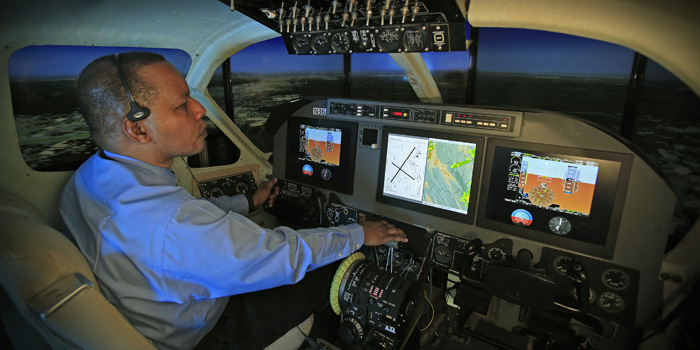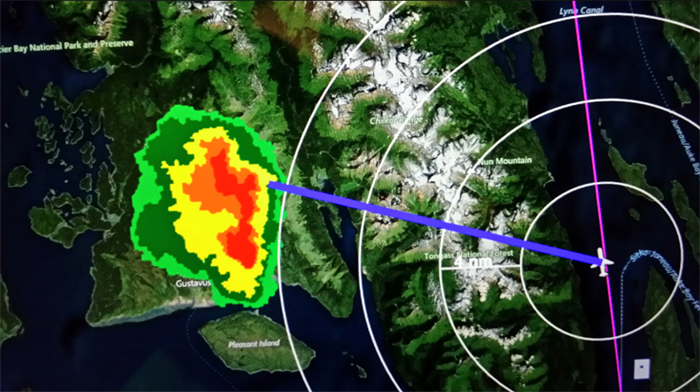Weather Technology in the Cockpit
The Weather Technology in the Cockpit (WTIC) program is an FAA weather research program. It develops minimum weather service recommendations for cockpit weather information and its rendering, pilot weather training, and cockpit weather technology for incorporation into standards, guidance documents, training materials, and technical transfer or government agencies for implementation.

The WTIC program researches ways to improve:
- Cockpit weather information and its rendering
- Pilot understanding and interpretation of cockpit weather information and technologies
- Weather information training
- Operational efficiency and safety by resolving cockpit weather-related gaps in information and technology.
The recommendations developed by WTIC research are referred to in the WTIC program as "Minimum Weather Services" for Part 91 and for Part 121/135 aircraft.
The WTIC program investigates the quality (accuracy, latency, spatial resolution, and others) of weather information available in the cockpit, how the weather information is presented or integrated, and what information is insufficient or missing. Types of adverse weather include: convection, lowered ceilings and visibility, icing, and turbulence.

WTIC research will develop, verify, and validate a set of Minimum Weather Service recommendations for FAR parts 91 (general aviation aircraft), 121 (commercial aircraft), and 135 (business aircraft) to address information shortfalls and enhance pilot weather decision-making in advance of encountering potentially hazardous weather conditions.
WTIC Research Reports
- Adapting Research Methodology in the COVID-19 Pandemic 6/2022
- An Assessment of Time-Based Active Reminders on Weather Related Behavior and Decision Making of General Aviation Pilots 7/2020
- Assessments of the Visual Flight Rules Not Recommended Statement 11/2019
- Symbol Salience Augments Change-Detection Performance in Cockpit Weather Displays. 8/2019
- General Aviation Pilot Situation Assessment and Decision-Making During Flights in Deteriorating Visibility Conditions. 8/2019
- Assessments of Flight and Weather Conditions during General Aviation Operations. 8/2019
- Combined Report: Aviation Weather Knowledge Assessment & General Aviation (GA) Pilots' Interpretation of Weather Products. 2/2019
- The effect of weather state-change notifications on general aviation pilots' behavior, cognitive engagement, and weather situation awareness 12/2015
- Initial assessment of portable weather presentations for general aviation pilots. 7/2015
- Now you see me, now you don't: Change blindness in pilot perception of weather symbology 6/2014
- Effects of weather presentation symbology on general aviation pilot behavior, workload, and visual scanning 11/2012
Training
- Experiential Education Latency Module
- Enhancing Pilot Knowledge of Aviation Weather Course.
- Enhancing Pilot Knowledge of Aviation Weather Course: Weather Technology in The Cockpit (WTIC) FAA NextGen Weather Research Program
- WeatherXplore Application
- 10 Weather Mini-Lessons
